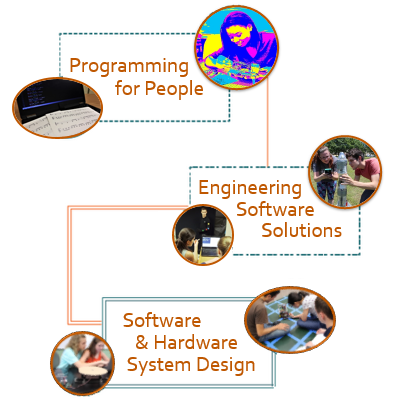EYW: Engineering Applications of Computer Science
Course Overview for EYW: Engineering Applications of Computer Science
EYW: Engineering Applications of Computer Science is an engineering course that engages students in programming and computational thinking to solve human-centered, technically challenging projects at the intersection of engineering and computer science. The goal of this course is to engage students in meaningful versions of the practices of professional engineers and computer scientists while sparking a passion for engineering, computational thinking, and problem-solving that will serve all students no matter what their future career goals may be.
Programming for People
After learning the basics of Python programming, students combine engineering and computational thinking skills to create an image processing tool that turns digital photos into Warhol-style artwork.
Engineering Software Solutions
Teams collaborate to develop a low-cost, at-home physical therapy system. Combining the design of a wearable device and a user-friendly interface, this challenge requires students to balance user needs and project constraints.
Software & Hardware System Design
Students combine a Raspberry Pi with sensors and actuators to create user-focused mechatronic assistive devices. Then, adding what they know about image processing from earlier challenges, teams develop a camera-controlled wheelchair for a person with quadriplegia.
Request the printable course overview and access sample lessons.
Learn more
Unit Descriptions for EYW: Engineering Applications of Computer Science
Students explore mechanical, electrical, and biomedical engineering through a series of design challenges that illustrate how engineering can improve people’s lives and health, conserve resources, and enable creativity in the arts.
Unit 1: Photo-and-Text Memes (Programming in Python)
 Photo-and-Text Memes
Photo-and-Text Memes introduces Python, the coding language that students will use throughout
Engineering Applications of Computer Science. Students develop basic coding skills while creating a program that allows a user to combine a picture with overlaid text, essentially creating their own memes.
Unit 2: Custom Photo Filters (Exploring Images)
 Custom Photo Filters
Custom Photo Filters invites students to create their own digital image processing programs to convert any color or grayscale image to a six-tone, Warhol-style picture. Students use engineering tools and techniques to “reverse engineer” existing code, model user needs, and develop a project plan for the challenge. They learn to build on existing code, integrate libraries of code, and create a software user interface that will allow an artist to “paint” images by controlling colors with slider bars. Finally, students write instructions for the artist who will be using the program. Students’ coding and writing skills are put to the test when the program and its documentation are handed over to students in another class, such as an art class or
Engineering Design and Analysis, for user testing and feedback.
Unit 3: Computer-Assisted Physical Therapy (Analyzing Video)
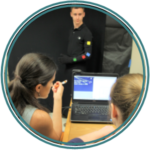 Computer-Assisted Physical Therapy
Computer-Assisted Physical Therapy engages students in engineering design to develop a real-time feedback tool for physical therapy patients performing rehabilitation exercises. After analyzing user needs and creating a functional model for the system, students design and build a basic wearable device that allows a web camera to capture information about the range of motion of a joint. Students write programs that analyze large quantities of video data, apply an algorithm for calculating changing joint angles, provide real-time user feedback, and export data to a file for later analysis by the patient’s physical therapist. The challenge ends with students developing recommendations for future improvements to their systems.
Unit 4: Mechatronic Assistive Devices (Building and Coding)
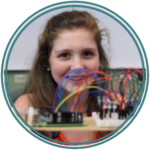 Mechatronic Assistive Devices
Mechatronic Assistive Devices engages students in building and programming mechatronic devices that incorporate Raspberry Pis (extremely affordable, pocket-sized computers) with structural elements, sensors, motors, lights, and other components. Students build and program scale models of assistive devices such as an automated “lazy Susan” to assist people with disabilities and an automated “smart lighting” control system. Once each device is working, students use engineering concept generation and selection techniques to create improvements that enhance functionality. By integrating mechanical redesign with algorithm and code improvements, students develop devices that better serve their customers’ needs.
Unit 5: Camera-Controlled Wheelchair (System Design)
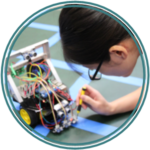 Camera-Controlled Wheelchair
Camera-Controlled Wheelchair has students develop a wheelchair control system to improve independence and mobility for people with quadriplegia. Students analyze customer needs and generate design concepts for a physical apparatus to capture user head movements via a chair-mounted camera. They integrate original and off-the-shelf hardware and software to control chair speed and direction based on the detected head motion, create testable prototypes of their designs, and refine their systems through iteration.
Unit 6: Water Rockets (Model Selection and Performance)
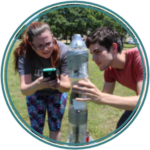 Water Rockets
Water Rockets ends the year on an engaging note as students use a computer model to customize a water rocket to reach maximum altitude. Students select an initial rocket design, use the model to predict its maximum altitude, build and launch a physical rocket, compare the actual altitude to the predicted altitude, discuss the accuracy of the model, and make informed revisions to their rockets. They then predict the performance of their revised design, relaunch, and compare results to predictions.
Request the printable course overview and access sample lessons.
Learn more
Benefits to Students
EYW: Engineering Applications of Computer Science offers students a unique opportunity to learn computational thinking skills in the context of human-centered design projects. Like EYW: Engineering Design and Analysis, this course teaches creativity, critical thinking, problem solving, collaboration, communication, and purposeful application of STEM and computing principles. Students who complete this course are well-placed to make informed decisions about future coursework in engineering, computer science, robotics, and related fields.

